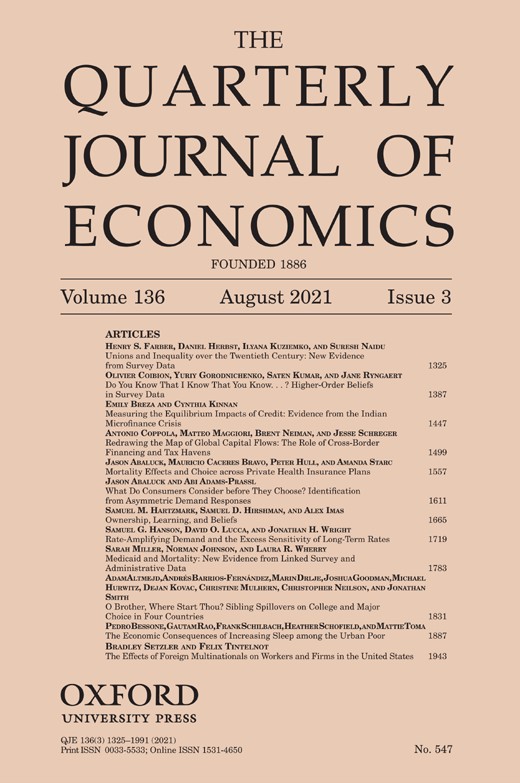-
Views
-
Cite
Cite
Emily Breza, Cynthia Kinnan, Measuring the Equilibrium Impacts of Credit: Evidence from the Indian Microfinance Crisis, The Quarterly Journal of Economics, Volume 136, Issue 3, August 2021, Pages 1447–1497, https://doi.org/10.1093/qje/qjab016
Close - Share Icon Share
Abstract
In October 2010, the state government of Andhra Pradesh, India, issued an emergency ordinance, bringing microfinance activities in the state to a complete halt and causing a nationwide shock to the liquidity of lenders, especially those with loans in the affected state. We use this massive dislocation in the microfinance market to identify the causal impacts of a reduction in credit supply on consumption, earnings, and employment in general equilibrium in rural labor markets. Using a proprietary district-level data set from 25 separate, for-profit microlenders matched with household data from the National Sample Survey, we find that district-level reductions in credit supply are associated with significant decreases in casual daily wages, household wage earnings, and consumption. We find a substantial consumption multiplier from credit that is likely driven by two channels—aggregate demand and business investment. We calibrate a simple two-period, two-sector model of the rural economy that incorporates both channels and show that the magnitude of our wage results is consistent with the model’s predictions.



